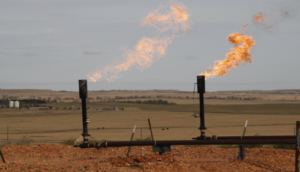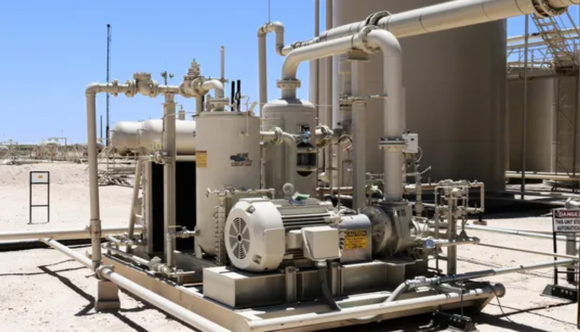Introduction
The North American oil and gas industry has seen tremendous growth as a result of horizontal drilling and facing shale plays as a result Operators require a Vapor Recovery Unit (VRU) strategy to capture gas, rather than flare or vent emissions. The following document outlines how major Oil & Gas Produces like Diamondback Resources and EOG have implemented vapor recovery units as part of a leak detection and repair program to reduce emissions.
Oil & Gas Production Growth
The global population is expected to grow an additional 1.3 billion; from 7.7 billion in 2019 to over 9 billion in 2040 this will continue to fuel the consumption of oil & natural gas. The world currently consumes about 100 million barrels of oil a day. In 2019, global demand for natural gas increased by 1.5% compared to 2018, that is a 57.9 Bcm addition, up to 3 986 Bcm.
There is no greater example of the growth of the oil & gas industry than the Permian Basin. Total oil production in the Permian will be 5.4 mbd in 2023, more than the total production of any OPEC country other than Saudi Arabia. Nearly 41,000 new wells and $308 billion in upstream spending between 2018-2023 will drive that growth.-2023 will drive that growth.
The growth of oil & gas production and the desire to reduce emissions oil & gas operators have implemented ESG programs. Part of an ESG program programs provide a systematic approach for identifying and eliminating fugitive emission at oil and gas locations, refineries and chemical facilities. A company will often set-up an Environmental, Social and Governance (ESG) Steering Committee to set the directives for an LDAR program. Different technologies are available to detect the emmisions depending on the nature of the fluid and equipment. These range from basic material balance techniques to much more complicated systems.
Flaring and CO2 Emissions
Flaring of associated gas related to the drilling may be necessary, with permission from the regulator, if a well is being drilled in a new area that lacks natural gas pipelines. Several wells may be drilled and produced for an extended period of time before a company determines from the test data that an investment in production facilities, pipelines and vapor recovery units will meet economic standards.
Flaring of associated gas may continue even after the decision to continue with development and construct oil transport pipelines and facilities has been approved.
Until transmission, storage, and delivery infrastructure increases in these newer or expanding producing regions, flaring and venting will continue to represent environmental issues and lost market opportunities. Of specific importance has been the increase in flaring of gas associated with oil production in liquids rich plays where there is not enough gas gathering and transportation infrastructure to enable the gas to be marketed.
The Texas Railroad Commission on February 2021 deferred a series of applications belonging to oil companies including Ovintiv Inc. One request by SN Operating LLC sought to flare more than $1 million worth of gas because it would be too expensive to build a pipeline to haul the fuel to markets, a claim the agency’s newest member said warranted “further investigation.” Texas has flared about as much gas annually as all of its residential users consume.
Examples of Operators addressing flaring in the Permian
Oil producers in Texas have been working to reduce flaring levels through various efforts. In March 2020, a voluntary coalition of companies and organizations formed the Texas Methane and Flaring Coalition comprised of 40 state operators and industry groups. The Coalition will evaluate existing data and evidence on flaring and methane emissions from the industry in Texas and will develop opportunities and recommendations to continue to minimize these practices.
- Diamondback is an independent oil and natural gas company headquartered in Midland, Texas focused on the acquisition, development, exploration and exploitation of unconventional, onshore oil and natural gas reserves in the Permian Basin in West Texas. Diamondback’s activities are primarily focused on the horizontal exploitation of multiple intervals within the Wolfcamp, Spraberry, Clearfork, Bone Spring and Cline formations. Diamondback Energy Inc. improved its environmental stewardship in the third quarter in 2020, with only 0.5% net natural gas production flared, down 74% year/year. Flaring is the biggest driver of our CO2 emissions. And while we are happy with our progress on our legacy acreage, we still have significant work to do on our recently acquired positions as we move to reduce our Scope 1 GHG intensity by at least 50% from 2019 levels by 2024. We’ve also committed to reducing our methane intensity by 70% over the same time frame.
- EOG Resources‘ geographic focus is determined by where it can locate primary energy resources — natural gas, natural gas liquids, and oil. In recent years that focus has been on exploiting shale plays in the US. EOG Resources, which has worked to mitigate or reduce flaring by installing natural gas gathering lines early and contract sufficient takeaway capacity to provide flow assurance. Its marketing and midstream infrastructure planning is done well in advance of an expected increase in activity and production growth. EOG also uses vapor recovery units that direct tank vapors into a natural gas sales line. “We are proud of our efforts to minimize flaring,” Creighton Welch, EOG’s manager, government relations and communications, told the Reporter-Telegram by email. “We have a long history of using technology and innovation to improve our company, and though we already have one of the lowest flaring rates in Texas, we continue to look for solutions to reduce flaring even further,”
- Pioneer Natural Resources Company is an American energy company engaged in hydrocarbon exploration in the Cline Shale, which is part of the Spraberry Trend of the Permian Basin, where the company is the largest acreage holder. The company is organized in Delaware and headquartered in Irving, Texas. Pioneer Resources president and CEO Scott D. Sheffield said his company also is targeting a 25 percent drop in greenhouse gas emissions per unit of oil and natural gas production by 2030. Pioneer prioritizes vapor recovery unit (VRU) technologies that allow us to capture gas, rather than flare or vent emissions. Our engineering design process considers VRU capacities when it comes to facility design. VRUs are compressor units that remove vapors and gases, including methane and other uncombusted air emissions, from storage vessels, then route the gases into sales pipelines. Since 2012, we have installed VRUs at horizontal well tank batteries as part of the standard facility design and primary emission control in our operations. VRUs are also part of our vertical well facility designs as needed, based on facility production. In 2019, horizontal well tank batteries accounted for 90 percent of our oil and gas production, therefore having the most significant impact on our facility emissions. As a result, in 2019, Pioneer VRU’s captured 9.3 billion cubic feet of gas (the equivalent of 5.6 million metric tonnes of CO2e emissions). For perspective, Pioneer’s total 2019 emissions footprint was 2.27 million metric tonnes. This practice, along with constructing adequate gas take-away infrastructure prior to producing wells and continuing our industry leading LDAR activities, puts Pioneer in a position to capture and sell a maximum volume of gas while reducing our emissions footprint.
- Occidental’s U.S. business is focused in the Permian Basin of West Texas and southeast New Mexico, one of the largest and most active oil basins in the United States, accounting for approximately 30 percent of the total U.S. oil production. Occidental is the No. 1 producer in the Permian Basin, with operations focused on the Delaware and Midland basins, as well as the Central Basin Platform. Occidental’s New Mexico operations, a new gas gathering system has dramatically reduced volumes of flared gas. This gathering system reduces our reliance on third-party takeaway capacity and avoids unscheduled flaring events by facilitating the transfer of sales gas to multiple third party midstream companies. Aspects of this system design include a closed loop flowback system that captures gaseous vapors released from flowback fluids directly into the gathering system via vapor recovery units. Equipment upgrades also included in this system design increase the reliability and redundancy of our production systems, leading to reduced downtime and significantly lower flaring volumes at the facility level. We estimate that this gathering system reduced 2019 annual carbon dioxide equivalent (CO2e) flaring emissions by more than 60 percent, relative to flaring emission projections had the gathering system not been constructed. Occidental secured extra capacity within the different third parties’ systems to provide additional natural gas capacity should interruptions from one party occur. Collectively, these actions provide our New Mexico operations the flexibility to move produced gas into the sales-gathering system under a wide variety of scenarios, significantly decreasing the necessity to flare.
- ConocoPhillips is a multinational corporation engaged in hydrocarbon exploration. It is based in the Energy Corridor district of Houston, Texas. The company has operations in 17 countries and has production in the United States, Norway, Canada, Australia, Timor-Leste, Indonesia, Malaysia, Libya, China, and Qatar. ConocoPhillips is installing vapor recovery units at new facilities so produced gas from 3-phase separators is sold and utilizing mobile vapor recovery units which convert flare gas into CNG. The produced CNG can then be used to power drilling or completion operations. In addition, they are working with a third-party gatherer to debottleneck segments of a gathering system, allowing more gas to be sent to the pipeline and adding equipment to high H2S sites to gather more gas for sales, rather than flaring. These projects have the potential to reduce our flaring by half the equivalent of removing approximately 100,000 tonnes of CO2e per year.
- XTO Energy knows the X’s and O’s of a successful oil and gas strategy. The oil and gas exploration and production company buys and develops mostly long-lived producing properties to produce oil and gas (including extracting natural gas and from US shale and other tight formations); it also develops unproved reserves. XTO’s methane reduction program includes a commitment to using low-emission technologies to improve the environmental performance of our operations, particularly as we expand operations in the Midland and Delaware basins. A leading opportunity includes incorporating compressed air instead of natural gas to operate pneumatic controllers for new tank batteries and satellites. Other opportunities include expanded use of vapor recovery units, supervisory control and data acquisition monitoring of operating systems and continued moving to centralized designs for our tank batteries and controls.
- Marathon Oil Corporation (NYSE: MRO) is an independent oil and natural gas exploration and production (E&P) company based in Houston, Texas. We’re focused on the lower-cost, higher-margin opportunities in the U.S. resource plays, and remain steadfast in our commitment to be safe, responsible and ethical. Marthon methane intensity decreased 19% in 2019. To manage methane emissions intensity, we eliminated high-bleed pneumatic controllers from all our operations, implemented the use of emission-free controllers and pumps and used ultra-high efficiency flares. In addition, we reduced flash emissions by installing vapor recovery towers (VRT) and vapor recovery units (VRU) where feasible. A VRU recovers vapors in crude oil or condensate tanks. A VRT is a tall pressure vessel installed between the production separators and liquid storage tanks to capture pressurized gas that would otherwise be sent to the tanks. VRUs and VRTs are used at many of our new facilities, where appropriate, to capture additional natural gas and reduce the likelihood of emissions from tank thief hatches.
- Callon Petroleum Company is an independent oil and natural gas company focused on the acquisition, exploration and development of high-quality assets in the leading oil plays of South and West Texas. Callon Petroleum our core footprint to approximately 200,000 net acres in the Permian Basin and Eagle Ford Shale.Callon applies industry best practices to design and build our facilities to reduce vented emissions with emission control equipment that captures the largest amount of natural gas, including vapor recovery towers (VRT), vapor recovery units (VRU), combustors, and low-pressure flares. Consistent with industry best practice, we do not use highbleed pneumatic controllers, which are a major source of vented emissions. In 2021, we plan to field-test low-bleed and air-actuated pneumatic devices to evaluate full field implementation where third-party electrical power is available. By retro-fitting our existing pneumatic devices with zero emission air-actuated or low-bleed pneumatic devices, we can significantly reduce our methane emissions as well as our total GHG emissions from our operations.
The Role of Regulations in Permian related to flaring
Flaring of gas results in significant methane emissions. It is generally assumed that flares operate at 98% efficiency, meaning that 2% of the waste gas is not burned, and approximately 2 million metric tons per year of methane is released into the atmosphere as unburned gas.
The federal role in regulating oil and natural gas production focuses primarily on environmental protection, which, in the case of flaring and venting, is focused on air quality. The EPA sets standards on air quality under the authority of the Clean Air Act (CAA). In most cases, the EPA allows states to develop and implement the regulations necessary to meet federal standards. Also, BLM has the authority to regulate oil and natural gas production activities taking place on federal lands.
The Railroad Commission of Texas (RRC) and the Texas Commission on Environmental Quality (TCEQ) are responsible for establishing standards and enforcing regulations for oil and natural gas exploration and production. RRC broadly regulates oil and natural gas production while TCEQ regulates air emissions and water pollution. RRC has jurisdiction over permitting of flaring operations with respect to prevention of waste of natural resources.
State law allows oil producers to flare natural gas during the first 10 days of drilling at a well. To flare or vent gas outside of those 10 days, producers must obtain a permit from the Railroad Commission. Since 2011, the agency has issued more than 38,000 permits allowing for venting and flaring, and it approves virtually all applications for extensions.
It is well known that the push for the reduction of flaring in the Permian is underway at the Federal and State Government level as well at the Operators. Finding partners that have the experience in providing solutions to help meet the regulatory requirements to minimize emissions and maximize production is a very important step to having a long term strategy.
The role of vapor recovery units in the reduction of flaring
There are about 500,000 crude oil storage tanks in the United States. These tanks are used to hold oil for brief periods of time in order to stabilize flow between production wells and pipeline or trucking transportation sites. The EPA estimates that about 12,000 new storage tanks are installed every year.
During storage, light hydrocarbons dissolved in the crude oil or condensate—including methane and other volatile organic compounds (VOC), natural gas liquids (NGLs), hazardous air pollutants (HAP), and some inert gases—vaporize or “flash out” and collect in the space between the liquid and the fixed roof of the tank.
Best practice for reducing flaring includes preventing waste gas from being generated, recovering waste gas to sell it and injecting wastegas into oil and gas reservoirs. If waste gas cannot be recovered to be sold or injected into gas or oil reservoirs, it may be able to be used for generating electricity. As a final option,
when flaring cannot be avoided, improving the efficiency of flaring can reduce methane emissions.
Upstream production sites that produce condensate or crude oil send hydrocarbon liquid from a pressurized separator to a non-pressurized condensate tank. Methane will ‘flash’ from the liquid in the tank and may be vented or flared. This flash of methane is also possible in tanks that hold water (though to a far lower degree because methane is highly soluble in liquid hydrocarbon but not very soluble in water).
Vapor-recovery systems can capture the flash gas, compress it and transport it through a gas line to be sold, rather than it being vented to the atmosphere or it being flared. Vapor-recovery systems can be designed to recover more than 90% of gas that might otherwise be vented or flared.
Vapor recovery units (VRU) are primarily composed of a scrubber, gas compressor, motor, and switchgear. Its main purpose is to recover vapor from a storage tank that is normally discarded by releasing to the atmosphere or through a flare. Recovering gas vapors from tank batteries is not a new application for most owners and operators of oil and gas production companies and crude oil storage tank facilities. However, there have been questions as to the economic feasibility for the installation of Vapor Recovery Units (VRUs) on tank batteries.
Conclusion
The increased production in the permian and the commitment by operators to reduce flaring is creating the requirement for Operators. These include expanded use of vapor recovery units, supervisory control and data acquisition monitoring of operating systems and continued moving to centralized designs of tank batteries & controls and increased take-a-way pipeline capacity.
Carbon Capture
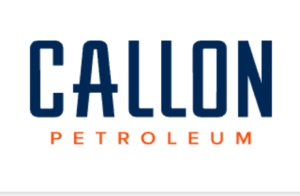
Callon Petroleum Releases Annual Sustainability Report
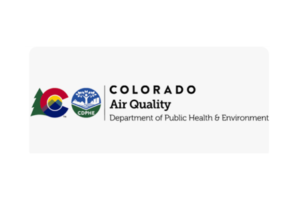
Colorado Adopts Groundbreaking Methane Measurement Rule
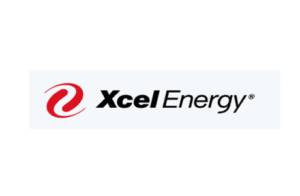
Xcel Energy plans solar power sites in southeast New Mexico amid shift toward renewables

Satellite detection for flaring

Oilsands group pledges to spend $16.5B on carbon capture project by 2030
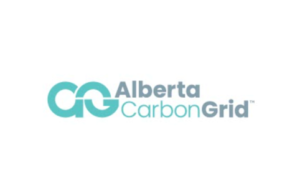
Alberta Carbon Grid gets go-ahead to evaluate 900,000-hectare potential CCUS site
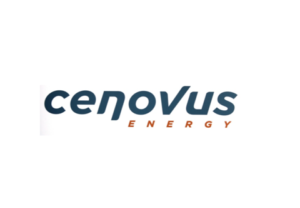
Cenovus Reports Success With Airborne Lasers in Fight Against Emissions
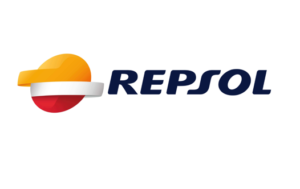
Bridger Photonics, Inc. to deploy methane detecting technology to help Repsol spot fugitive methane
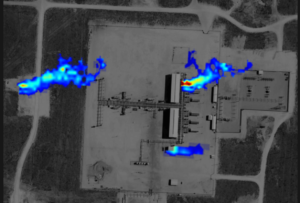
Building a Technology Toolkit for Methane Emissions Detection
